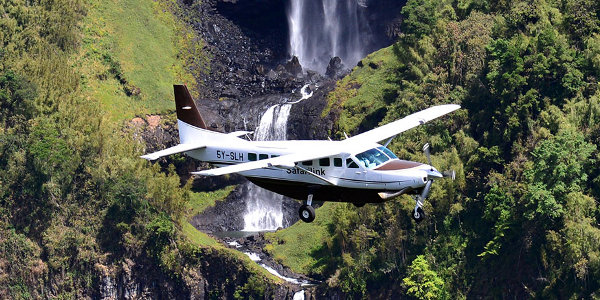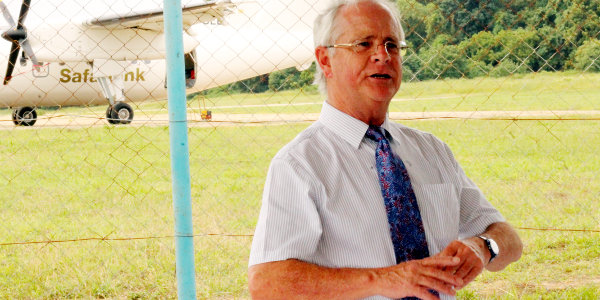In 2004 John Buckley set up Safarilink Aviation, a Kenyan airline that operates scheduled and private charter flights to popular tourist destinations across East Africa. He had spent 15 years in management working for the only Kenyan airline that served tourists at the time, and saw an opportunity for a second operator. In the first month of operation Safarilink carried 29 passengers. “It was very nerve-racking since we had a lot of expenses to pay for,” he recalls.
In the first month of operation Safarilink carried 29 passengers. “It was very nerve-racking since we had a lot of expenses to pay for,” he recalls.
Buckley and co-founder Anu Vohora worked the contacts they’d accumulated in the industry and steadily grew their passenger numbers.
“We knew if we survived the first year we’d be okay. Many travel agents were quite happy to have an alternative. After three months it was obvious we were doing well and we actually made a profit in the first year, which was unheard off. Our passenger numbers kept growing. In August 2013, for instance, we carried about 13,000 customers,” says Buckley.
Industry suffering due to security fears

Over the last decade Safarilink Aviation has grown exponentially. It now employs 98 staff and operates 10 aircraft. But today, like other players in Kenya’s tourism industry, the airline is going through difficult times.
“We have constantly made a profit every year until 2014 when we just broke even. This year will be a loss undoubtedly because of the depressed market. Unless it changes dramatically, 2015 is going to be the first year we will make a loss,” says Buckley.
Since the September 2013 Westgate Shopping Mall attack, which killed 67 people, the number of tourists coming to Kenya has sharply declined. Numerous terror attacks over the last two years have brought the industry to its knees with more than 20 hotels shut down and 30,000 workers laid off.
“There are a lot of companies teetering on the edge, and banks looking nervously on their loans. Luckily we are not in that position.”
“What was really surprising and depressing was the ignorance related to Ebola last year. The west coast of Africa, where the Ebola outbreaks were, is closer to Madrid (Spain) than it is to Kenya – but as an industry we had many cancellations and people not booking,” says Buckley.
Diversifying routes
Future prospects are “obviously worrying”, he adds. It is for this reason Safarilink is now diversifying into non-tourism related routes. Last year it launched daily flights to Lodwar, the capital of Turkana County – a remote area in northern Kenya where oil was discovered in 2012.
And this month, flights were offered to Vipingo Ridge, a 2,500-acre golf development. Targeted at Kenya’s wealthy, the Vipingo Ridge project combines a game conservancy, sandy beaches and an 18-hole course. The route is also targeted at neighbouring residents from Kilifi to Nyali who do not want the hassle of flying from Mombasa’s Moi International Airport.
“Looking back we should have probably gone into some more of the non-tourist routes several years ago. Tourism was climbing, and as they say ‘if it’s not broken don’t fix it’. We always knew that we were exposed but it would have been taking our eyes off the core business.
“At the time it was a good decision.”
Although Safarilink would like to expand to more routes in Kenya, Buckley says it is challenging finding sustainable routes outside of the four big cities – Nairobi, Mombasa, Kisumu and Eldoret.
“There are some routes we know airlines are losing money heavily on because there is not enough traffic to support a sustainable business. It is very expensive to operate an aircraft and sometimes people don’t appreciate that fact. Take for example our smallest aircraft, a small Caravan, it costs me about US$1,600 a week in insurance alone. That is about $200 a day if it is sitting here or flying – and I have got 10 planes like that.”
The tourism industry and aviation combined are “stressful”, adds Buckley.
“These days I try to mellow. In the early days if one of the aircraft was delayed coming out of maintenance I used to get in my car and drive to the other end of the airfield and stamp my feet and ask: ‘Why are we late?’ Now I know that it is not going to speed anything up, if anything it will only annoy the engineers.”
Source: Howwemadeitinafrica/++




























